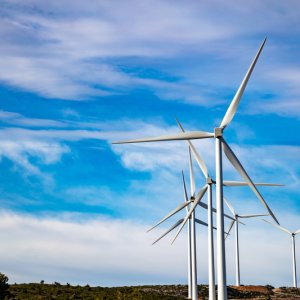
Vestas Cracked the Wind Power Waste Puzzle
 By Cas Biekmann | Journalist and Industry Analyst -
Mon, 05/24/2021 - 14:58
By Cas Biekmann | Journalist and Industry Analyst -
Mon, 05/24/2021 - 14:58
A coalition featuring academic and industry leaders spearheaded by Danish wind turbine frontrunner Vestas has developed a technology that turns the material used in wind turbine blades recyclable. The new advancements represent an enormous step toward a fully sustainable wind turbine value chain, as until-now unrecyclable blades were piling up in landfills.
The new technology, developed by the CETEC (Circular Economy for Thermosets Epoxy Composites) coalition, allows for the re-use of the thermoset composites used to manufacture wind turbine blades. It allows for glass or carbon fiber to be removed from the resin. Chemicals then break down the resin into base materials that can be used once again for new manufacturing. And thus, the circle is complete. CETEC expects the solution to be ready for industrial applications within three years and hopes that the technology could further be applied to the aerospace and automotive industries.
Wind turbines are already over 85 percent recyclable, explained CETEC in a press release. Nevertheless, the final piece of the puzzle still caused significant trouble. Bloomberg News reported that from 2020 onward, 8,000 turbine blades had to be removed in the US alone. The old thermoset composite material was manufactured to deal with hurricane-level winds, making it a challenge to even move or crush the blades, let alone repurpose them. By 2050, turbine blade waste would amount to 43 million tons, a Cambridge University study calculated. Knowing that once the blades were cut into pieces and reached a landfill they would remain there far beyond the near future, wind companies set out to address the problem. Renewable energy might be clean but it would only truly be sustainable if its value chain is cleaned up as well, industry leaders agreed.
As a result of this discussion, CETEC began searching for a solution through a collaboration spearheaded by Vestas that featured chemicals company Olin, the Danish Technological Institute and Aarhus University, as well as an independent technology research institute. Innovation Fund Denmark partially funded the research process.
“As global commitments to a net-zero future increase, it is absolutely crucial to ensure the wind industry can scale sustainably, which includes Vestas fulfilling our ambition to produce zero-waste turbines by 2040. Leveraging this new technological breakthrough in chemcycling epoxy resin, the CETEC project will be a significant milestone in Vestas’ journey towards achieving this goal, and in enabling a future where landfill is no longer required in blade decommissioning,” said Allan Korsgaard, Head of Sustainability and Advanced Materials at Vestas’ Innovation and Concepts arm.
Installed wind capacity made up 5.88 percent of Mexico’s total capacity in 2020, reports PRODESEN 2020-2034. As the country’s wind installed wind capacity grows, turbine recycling can be an asset in helping the country meet its sustainability goals.
















